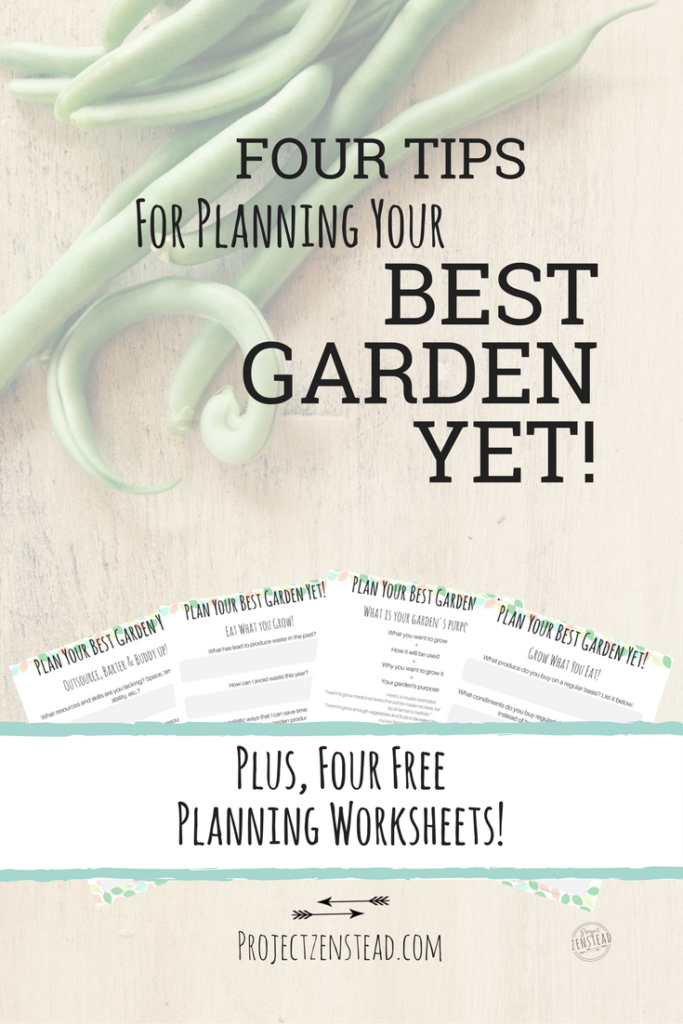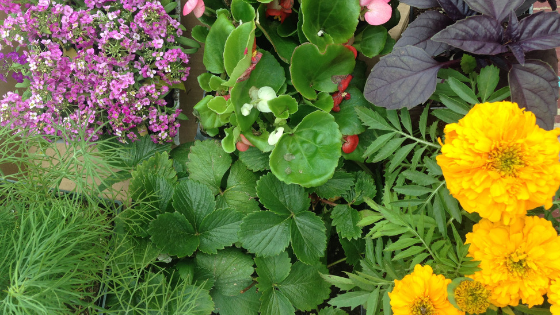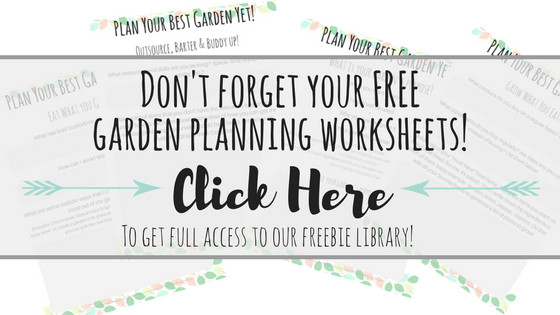Garden planning can be overwhelming! Use this four-step process and free worksheets to establish your garden’s purpose & grow the plants you need most!
I’ve been guilty (a time or two!) of racing head-first into the nursery and buying every plant in sight, only to get home and wonder what the heck I just did. Gardening can be so exciting that it’s easy to lose focus!
Have you ever ended up at the end of gardening season wondering why you needed 25 tons of zucchini or why you thought that you would suddenly learn to love eating radishes? We’ve all been there!
Here’s the good news: you can grow a garden that is custom-tailored to your life! All you need is to do a little planning first. These tips and free planning worksheets will get started down the right path and help you develop your best garden yet!
Think about the purpose of your garden
The first step of garden planning is to really think about what your big picture goal is. Remember college reports? Well, this is basically the thesis statement for your garden! What do you want to achieve with your garden? Maybe you want to be able to provide a certain percentage of your family’s food for the year. Or maybe you just want some fresh veggies during the summer. Or maybe you are interested in a specialty garden, such as a medicinal garden or a cocktail garden.
Every garden has a purpose. It is very important to define your future garden’s purpose before you do any other planning. If you don’t define your garden’s purpose, it will be difficult to have a clear plan of what you need to plant, how much you need to plant and why you are planting it. It can even define the type of things that you plan! For instance, if the purpose of your garden is to create a long-term food source, you will want to focus on perennial plants that will produce year after year. Defining your future garden’s purpose is the most important step in garden planning.
Here are some questions to get you started as you define your garden’s purpose:
What do you want to produce?
How will it be used/preserved?
Why do you want to produce it?
Grow what you eat
This may seem obvious, but I have met many people who grow a zillion tomatoes or zucchini or other item and don’t actually enjoy eating it. When I ask them why they chose to grow it, they usually say that they only wanted a few and didn’t realize how much the plant would produce or that they grew it because it’s just what you’re “supposed” to grow.
While it’s usually pretty easy to find someone to take your unwanted produce, it’s really a waste of your space, time and effort to produce things that you don’t enjoy eating. A better method is to start by planting the the things you already know that you love eating. Personally, I’m a tomato-aholic! So last year when I had limited time and space for a garden, I focused on planting tomatoes. Why? Because I knew that we would use them. Not only do we eat them fresh, but we can them as well (no aluminum can tomatoes for me, thank you!). If you plant what you enjoy eating, you will also be more invested in your garden. I’ve been guilty of losing focus on certain crops and letting them go to waste, but it definitely doesn’t happen with the crops that I love to eat!
Eat what you grow
Okay, this may seem like a complete contradiction of what I just said, but hear me out. While it’s important to grow the things that you like to eat, it’s equally important to actually eat the things that you grow. Cheeseburgers don’t grow on trees. Neither do nachos. Or pizza for that matter. See where I’m going with this?
There’s a certain level of inconvenience that accompanies gardening – and cooking/preparing meals for that matter! We often joke that we never have food in our house, just ingredients for food! That’s because the things that grow in a garden are usually the ingredients for the food you love. Which means you still have to take the time to clean it, prep it and prepare it. Even a garden fresh salad takes a certain amount of preparation! It’s okay to grab a fast, easy meal every once in a while, but being mindful about eating the food you grow is one of the most important steps you can take towards living a healthier, self-sustaining life.
It’s also important to open yourself up to experiencing new flavors and foods. The foods that we see in the grocery store are really just the tip of the iceberg! There are so many amazing varieties that you can grow! Don’t be afraid to try new things every once in a while! You may just find your new favorite food!
Outsource, barter and buddy up!
My final tip is to take full advantage of your friends, family and community in order to optimize your garden! Find people who have whatever it is that you lack. For example, if you are short on garden space, focus on growing smaller crops rather than large sprawling ones like squashes. Instead, find a local farmer to buy squash from. Or, if you struggle with growing tomatoes, but know someone who has the best tasting tomatoes in town, work out a trade! If you can’t dedicate a whole summer to growing produce, offer to split costs and harvest duties with a friend who can maintain the garden on their property.
Organic orchards and u-picks can be another great way to stock up on things like fruit and berries without having to grow them yourself. It will help optimize your time and gardening resources while building community connections. You might be surprised by how much you profit from those connections in the long run!
If you like it then you better put a pin on it!




